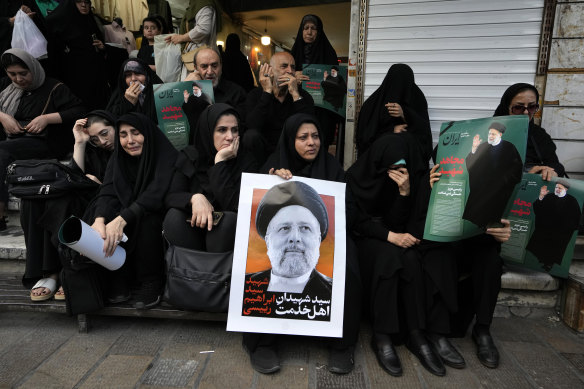
Short as it was, the Raisi era turned “resistance” into the semblance of a strategy.
A decade ago, it was possible to imagine a very different future for the US and Iran. Raisi’s predecessor, Hassan Rouhani, and his urbane, Western-educated foreign minister, Mohammad Javad Zarif, seemed determined to dial back the decades of hostility, and sanctions, that had crippled Iran’s economy. They talked about personal freedom and women’s rights, and courted European leaders even while Iran’s Revolutionary Guard kept funding terrorism.
Loading
Zarif engaged directly with the American secretary of state at the time, John Kerry – even triggering an uproar among Iranian conservatives when the two men were seen strolling together, deep in conversation, in Vienna.
In a series of often volcanic negotiations, Zarif and Kerry emerged with an agreement that essentially swapped Iran’s stockpile of nuclear fuel for sanctions relief. And while the country refused to give up its right to enrich uranium, it negotiated a complex series of limits on its activity that stretched to 2030.
The deal, of course, quickly came under attack in the US, especially in a Republican Congress because it only delayed Iran’s nuclear progress – it did not terminate its ability to cheat on the treaty. But it also proved enormously unpopular in Iran, especially after it turned out that the promised sanctions relief did not come as quickly, or fully, as promised.
Big European banks and other financial institutions did not want to take the enormous financial risk of reentering business agreements that could later run afoul of new sanctions, especially if relations with the West soured again.

People hold up posters of Iranian President Ebrahim Raisi during a mourning ceremony for him in downtown Tehran, Iran.Credit: AP
That is exactly what happened. Then-US president Donald Trump pulled out of the deal in 2018, and eventually so did the Iranians. Rouhani’s reformists were frozen out of the supreme leader’s inner circle, and, when Rouhani’s term ended, they were replaced by a new government that was openly dismissive of the nuclear agreement with the US and the reformist agenda at home. Crackdowns on dissent followed.
A new nuclear deal that seemed all but sealed in 2022 was killed in Tehran. Later, inspectors’ access to nuclear sites was limited, and Iranian authorities dismantled cameras and other monitoring devices. Only last week, the director general of the International Atomic Energy Agency was in Tehran, meeting with Amirabdollahian about trying to win greater access to nuclear sites. He emerged without an agreement.
And, in the months before his death, Amirabdollahian expressed little interest in calming tensions over the war in Gaza. “If the US continues its military, political and financial support of Israel and helps manage Israel’s military attacks on Palestinian civilians, then it must face its consequences.”
Amirabdollahian’s deputy for political affairs, Ali Bagheri Kani, has been named “caretaker” of the Foreign Ministry. He is well known to US officials, and he led the Iranian delegations that have secretly and indirectly negotiated with the US in Oman on at least three occasions over the past year.
Loading
His appointment suggests that the supreme leader is interested in continuity. But as one US official noted, Washington’s analysis over the past few years was focused on what would happen after the death of Khamenei, who is rumoured to be ill. No one foresaw that, at age 85, he would be picking a new president.
This article originally appeared in The New York Times.



























